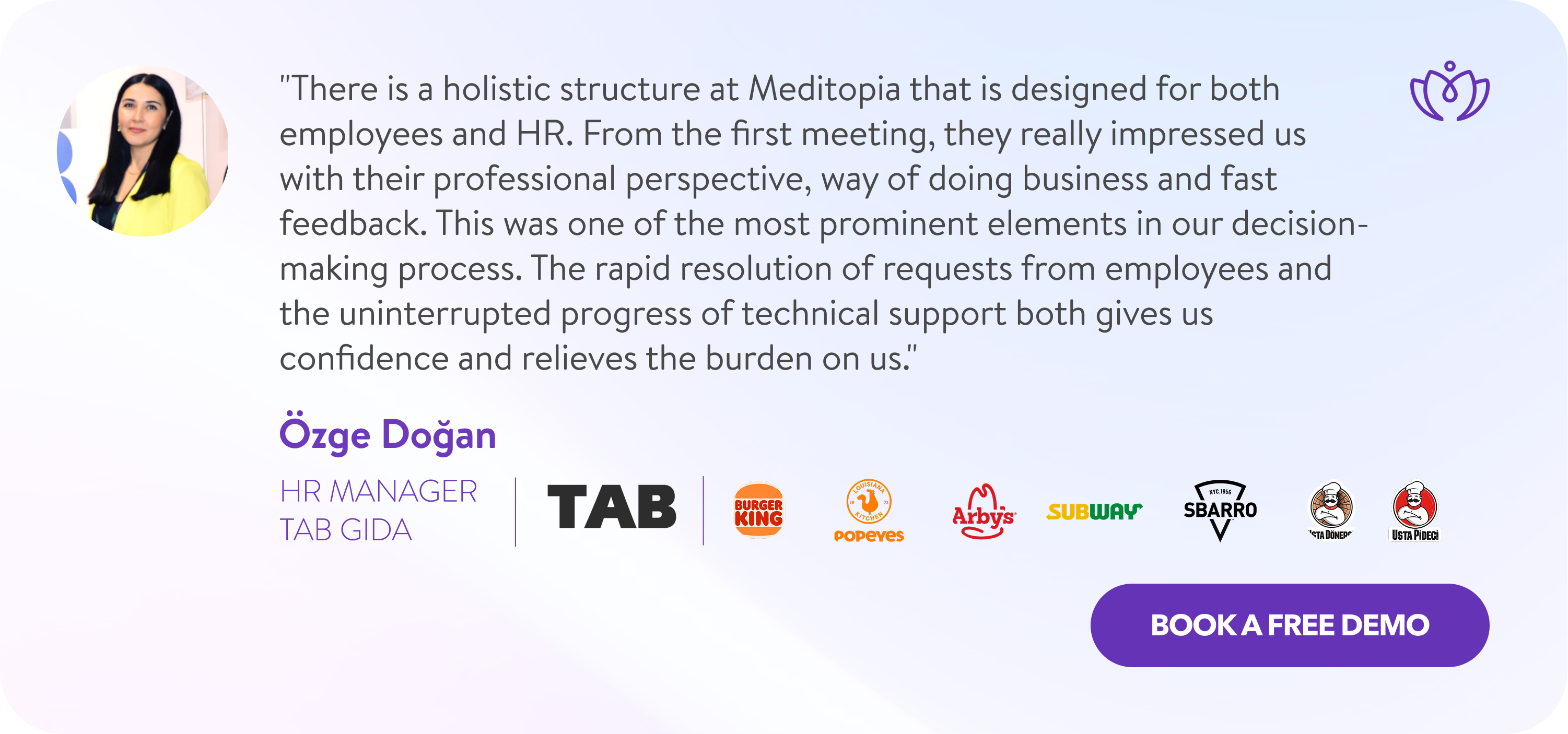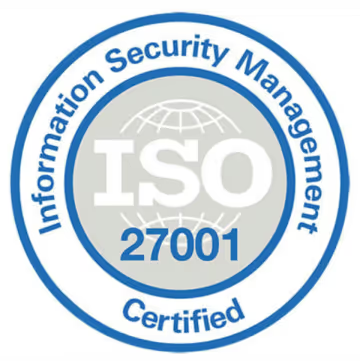With so many different generations in the work market, attracting talent and retaining top performers has become more challenging than ever. In fact, it's part of the well-known "talent war" many companies are experiencing, causing Human Resources (HR) and people managers to be under increasing pressure to develop innovative strategies to stand out as employers of choice.
How to Attract and Retain Top Talent in 2026
There are so many qualified employees that could help your company on so many levels… But how do you make them see you in such a competitive world? And more importantly, once they join you, how can you make them stay? Here are actionable and practical strategies for talent management, they will help you succeed in attracting and retaining talented employees in the current competitive landscape.

1. Start by Listening Continuously

Sometimes, the simplest yet most effective strategy for retaining employees is simply listening to them.
- Key Practices:
- Establish safe spaces for dialogue through regular 1:1 meetings and feedback channels.
- Acknowledge their challenges, aspirations, and needs, even if immediate solutions aren’t always possible.
- Focus on making them feel heard while exploring flexible work arrangements that foster belonging and purpose.
- Why It Matters: Employees who feel valued and understood are more likely to stay engaged and committed. Active listening builds trust, enhances workplace satisfaction, and helps organizations adapt to evolving workforce needs—ultimately reducing turnover and strengthening retention.
2. Career Development Opportunities

Employees don’t just seek jobs—they seek growth. Providing clear career development opportunities is a powerful way to attract and retain top talent.
- Key Practices:
- Invest in your employees' future by offering structured training programs, mentorship opportunities, and career coaching sessions.
- Ensure there are clear paths for advancement within your organization, allowing employees to see their potential long-term trajectory.
- Regular skill development initiatives and leadership programs can also help employees feel valued and motivated to stay.
- Why It Matters: When employees see that their employer is committed to their professional growth, they’re more likely to stay engaged and loyal. Career development fosters a sense of purpose, reduces turnover, and strengthens your company’s reputation as a place where talent can thrive.
3. Inclusive and Positive Culture

A workplace where employees feel valued, respected, and included is one where they want to stay.
- Key Practices:
- Foster an inclusive and positive organizational culture by implementing diversity training, encouraging open communication, and establishing employee resource groups.
- Promote a sense of belonging through equitable policies, inclusive leadership, and recognition of diverse perspectives.
- Why It Matters: An inclusive culture enhances job satisfaction, engagement, and loyalty. Employees who feel a strong sense of belonging are more productive, innovative, and committed to their organization—ultimately reducing turnover, attracting top talent.
4. Effective Onboarding Process

First impressions matter—an effective onboarding process can set the foundation for long-term employee success and satisfaction.
- Key Practices:
- Ensure new hires feel welcomed and supported from day one with a well-structured onboarding program.
- Provide comprehensive training, clearly communicate job roles and expectations, and facilitate introductions to key team members.
- Offer mentorship opportunities and check-ins to help new employees integrate smoothly into the company culture.
- Why It Matters: A strong onboarding experience boosts confidence, engagement, and productivity. Employees who feel supported early on are more likely to stay long-term, reducing turnover and fostering a positive work environment.
5. Recognition and Reward Programs

Employees who feel appreciated are more likely to stay engaged and committed to their work.
- Key Practices:
- Implement structured recognition and reward programs to celebrate employees’ hard work and achievements.
- Offer performance-based incentives such as bonuses, employee of the month awards, and public recognition to reinforce their contributions.
- Additionally, consider personalized appreciation gestures like wellness gifts or employee thank-you gifts to make recognition more meaningful.
- Why It Matters: A culture of recognition fosters motivation, job satisfaction, and loyalty. When employees feel valued, they are more likely to stay with the company, perform at their best, and contribute to a positive workplace environment.
6. Flexible Work Arrangements

Flexibility is no longer just a perk—it’s a key factor in attracting and retaining top talent.
- Key Practices:
- Offer flexible work arrangements such as remote work, adjustable hours, and compressed workweeks to support employees' work-life balance.
- These options are not only cost-effective but also allow businesses to attract a wider talent pool.
- Why It Matters: Employees who have control over their schedules experience less burnout and greater job satisfaction. Flexibility leads to higher retention rates, as employees are more likely to stay with an organization that respects their personal and professional needs. To learn more about how to make remote employees feel included, please check our blog on the matter.
7. Competitive Employee Benefits

A strong benefits package can be the deciding factor in whether employees join—and stay with—your organization.
- Key Practices:
- Offer comprehensive benefits that go beyond salary, including health insurance, retirement plans, paid time off, and wellness programs.
- Regularly review and update your benefits package to stay competitive in the job market and ensure it aligns with employees' evolving needs.
- Why It Matters: Competitive benefits enhance job satisfaction, reduce turnover, and improve overall workplace morale, which also makes easier attracting new talent. When employees feel supported in both their personal and professional lives, they are more likely to remain loyal and engaged.

8. Internal Talent Mobility Programs

Employees are more likely to stay when they see opportunities for growth within their own organization.
- Key Practices:
- Encourage internal mobility by creating programs that facilitate lateral moves, cross-functional projects, and internal promotions.
- Provide employees with clear pathways for career progression and support their development with mentorship and upskilling initiatives.
- A transparent approach to internal hiring helps employees envision a future within the company.
- Why It Matters: When employees see growth opportunities within their current organization, they are less likely to seek them elsewhere. Internal mobility increases engagement, strengthens retention, and ensures that valuable talent continues to contribute to business success.
9. Personalized Employee Experiences

A one-size-fits-all approach no longer works—personalized employee experiences drive engagement and retention.
- Key Practices:
- Tailor career development, recognition, and work-life balance initiatives to meet individual employee needs.
- Offer customized professional development plans, flexible work arrangements, and personalized recognition programs.
- By understanding employees’ unique motivations and aspirations, companies can create a workplace where everyone feels valued and supported.
- Why It Matters: Personalized experiences enhance job satisfaction, increase loyalty, and reduce turnover. When employees feel that their employer invests in their individual growth and well-being, they are more likely to stay and thrive within the organization.
10. Employer Branding

A strong employer brand not only attracts top talent but also fosters loyalty among existing employees.
- Key Practices:
- Showcase your company’s strengths, values, and workplace culture through social media, your company website, and employee testimonials.
- Highlight real employee experiences to create an authentic and compelling employer brand.
- Actively engage in employer branding initiatives that reinforce your organization’s reputation as a great place to work.
- Why It Matters: A positive employer brand makes your company stand out in a competitive job market, attracting top talent while also increasing employee pride and retention. When employees feel connected to a company’s mission and values, they are more likely to stay and contribute to its long-term success.
Why Attracting Talent Is Important?
In the world of work-force planning, and after reading those 8 strategies to attract and retain talent, you may wonder why your company should focus on them. What’s the real benefit? Is it really worth the monetary and human investment? The short answer is yes, but here we give a few more in-depth reasons.
- According to a study by McKinsey & Company [1], organizations with diverse and high-caliber talent are 1.7 times more likely to be innovation leaders in their market segments. This statistic underscores the critical role that attracting employees with unique skills and creative thinking plays in maintaining a company's competitive advantage.
- Research by the Harvard Business Review [2] indicates that high performers are 400% more productive than the average employee. This can lead to better project outcomes, improved customer satisfaction, and higher revenue. By focusing on innovative ways to attract talent, companies can ensure they have the right people in place to drive performance and achieve strategic goals.
- Simply put, companies that excel in how to attract employees to their company are better positioned to outperform their competitors. It’s a matter of strategic advantage.
Just like Lisl Pietersz [3], Communication and Transition Coach at the University of Sydney, said: "If you want to attract and retain the right people, your organisation must make it a priority. Communicate a strong employee value proposition (EVP), deliver an exceptional employee experience, offer great benefits and rewards, and build and promote your reputation."
For more information about how can hr managers support employee mental health, please check our blog on the matter.
Why Retaining Employees Is Important?
Employee retention is a critical component of organizational success, directly impacting financial health, operational efficiency, and company culture. Let’s explore more on this topic and how retaining employees can help your company’s reputation, budget, and goals.
- High employee turnover can be incredibly costly for organizations. The costs associated with recruiting, hiring, and training new employees can add up quickly. According to the Society for Human Resource Management [4] (SHRM), the average cost to hire an employee is approximately $4,129, and it can take up to 42 days to fill a position.
- Retaining employees helps preserve critical institutional knowledge that is essential for maintaining consistent performance and achieving long-term goals. Experienced employees understand the company's processes, systems, and culture, and their expertise can be difficult to replace.
- A stable workforce contributes to a more cohesive and positive organizational culture. Retaining employees fosters a sense of community and belonging, which can enhance job satisfaction and employee engagement. A strong organizational culture built on stability and trust can attract top talent and improve overall performance.
Real-World Examples
Looking for some inspiration? Many companies globally are investing in strategies to attract the best talent and retain it for years. Let’s discover some real examples.
Mutual of Omaha
Mutual of Omaha, a Fortune 500 insurance company, has excelled in attracting and retaining talent by implementing comprehensive employee surveys and leveraging insights to improve their workplace.
They faced challenges in recruiting for technology roles and experienced high turnover within the first two years of employment. To address this, they utilized employee engagement and pulse surveys to capture feedback at various stages of the employee journey.
These surveys helped identify key areas for improvement, such as post-pandemic work arrangements and their ability to attract, engage, and retain top talent. As a result, Mutual of Omaha achieved a 94% favorability rating from new hires after 30 days of employment [5].
Sagefrog Marketing Group
Sagefrog [6] emphasizes employer branding as a key strategy to attract and retain top talent. By crafting a compelling Employer Value Proposition (EVP) that highlights professional development opportunities, supportive culture, and competitive compensation, Sagefrog has built a robust employer brand.
The company regularly reviews its compensation structures, benefits, and workplace perks to stay competitive. Transparency, trust, and employee advocacy are also core components of their strategy, ensuring that employees feel valued and engaged.
Clif Bar & Company
Clif Bar & Company [7] is renowned for its impressive 97% employee retention rate. The company has created a culture of ownership by implementing an employee stock option program (ESOP), aligning with its mission and values.
Clif Bar focuses on personalized growth and development, offering tailored development plans that benefit both the employees and the company. This commitment to personal and professional growth has helped them maintain exceptionally low turnover and high employee satisfaction.
























